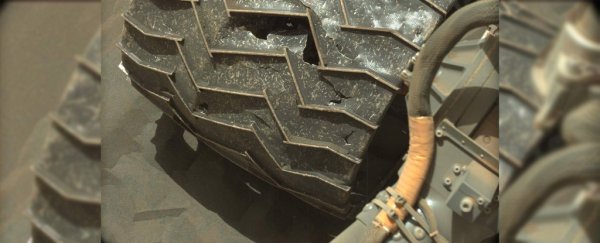Have you heard the one about NASA spending millions to develop a pen that would write in space, while the Soviet Union used pencils?
Well, that story is a big fat myth, but the refrain 'simple is best' isn't wrong. For example, to secure any loose cables, pipes, or even equipment on Mars rovers, NASA does indeed use zip ties - quite similar to the ones you can buy at the hardware store.
This fact recently bemused our Instagram fans, with many deciding that the photo of Curiosity's worn-down wheels we recently published was fake - due to some zip ties clearly visible in the shot.
This isn't the first time the internet has been enthralled with NASA's use of zip ties, either. Back when Perseverance landed on the red planet in February, there was a similar wave of surprise sloshing across social media.
Bleeding edge technology machine on another planet is saved by zip ties😂 pic.twitter.com/G3rPdODjNe
— Toby Li (@tobyliiiiiiiiii) February 22, 2021
If you're wondering how plastic can survive a 560-million-kilometer (350-million-mile) journey, a 1,300 C (2,370 F) fall to the surface, and - in Curiosity's case - almost nine years of ultraviolet radiation (UV) and harsh Martian conditions, you've come to the right place.
NASA can assure all amateur cable tie enthusiasts that space engineers thought of this before sending their expensive equipment to another planet.
The zip ties intended for extraterrestrial use are made of Tefzel ETFE (ethylene-tetrafluoroethylene) resins designed for extreme temperatures, high UV levels, and 2,000 times more radiation than what you'd find in the standard plastic nylon version.
View this post on Instagram
Originally, they were an aquamarine color to differentiate them from standard cable ties, but nowadays they are produced in whatever color necessary. As you can see on Curiosity, they might be resistant to almost everything, but they can still get dirty throughout years of dust storms and travelling around Mars.
And, in this case, it looks like these sturdy zip ties have even outlasted aluminum wheels on Mars.
